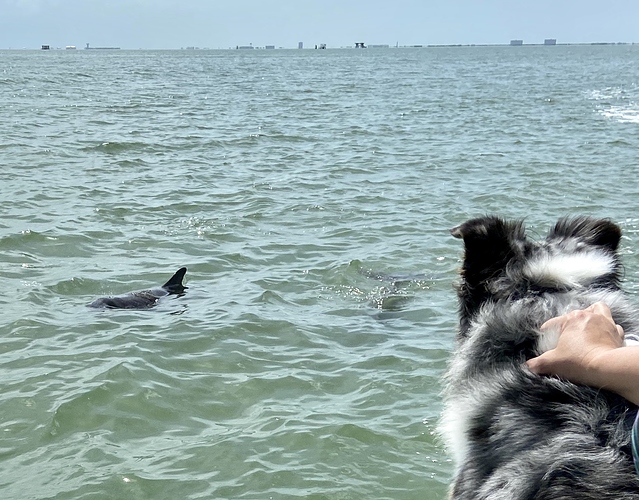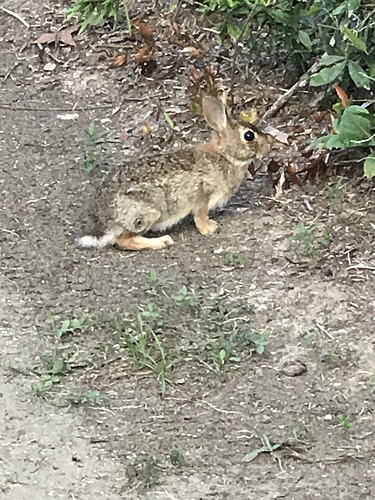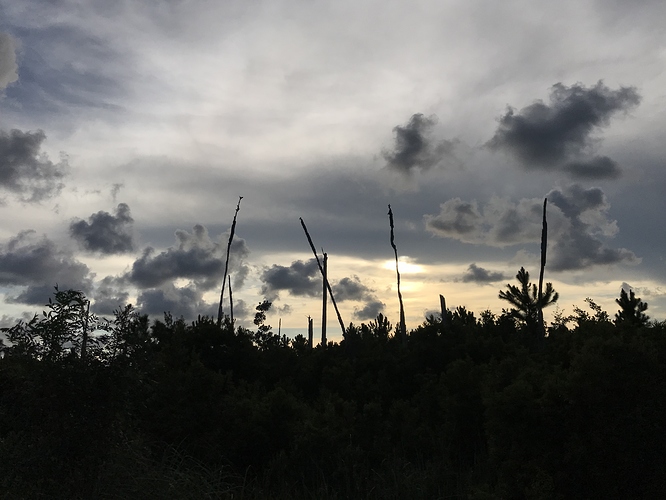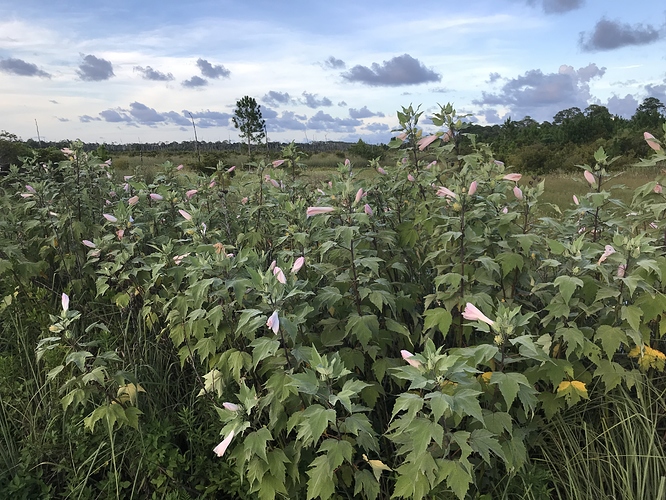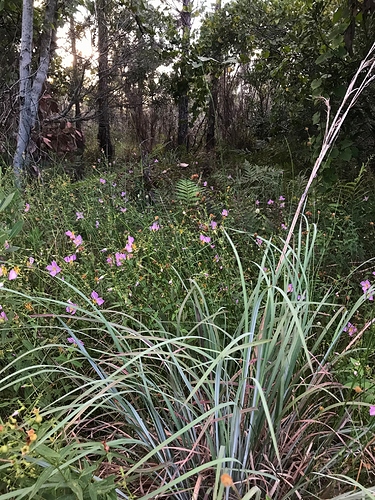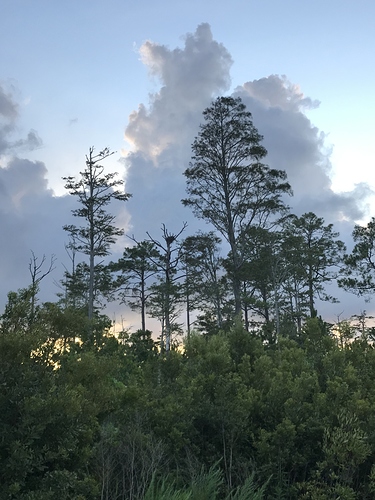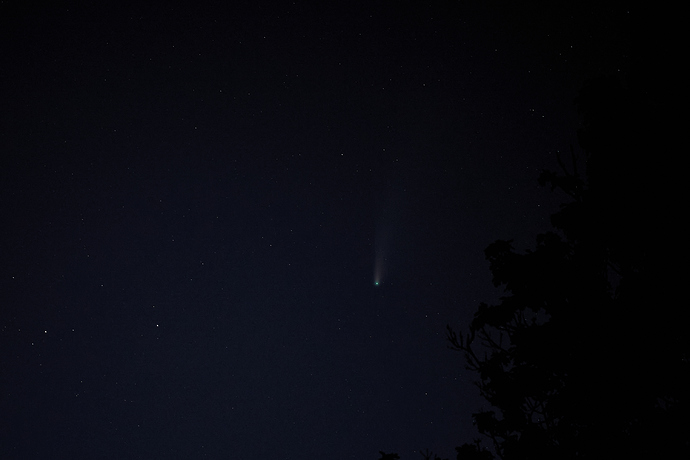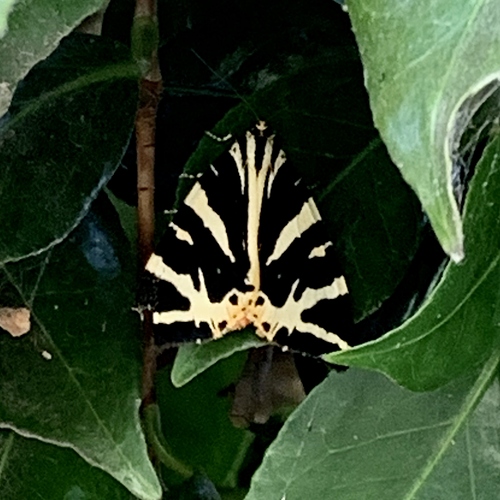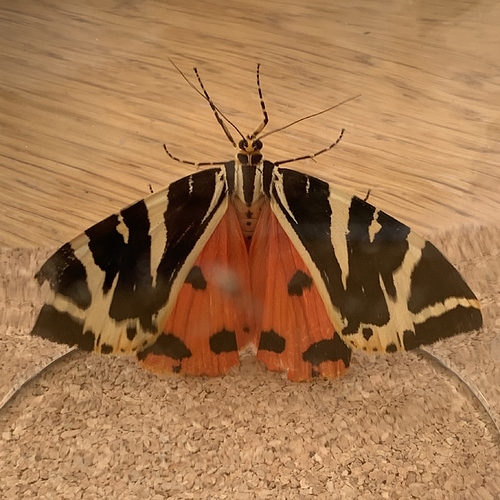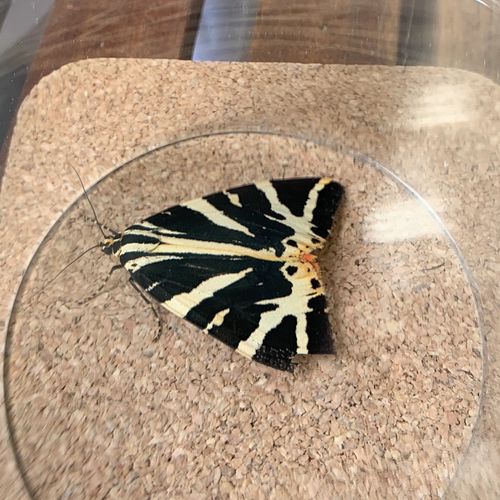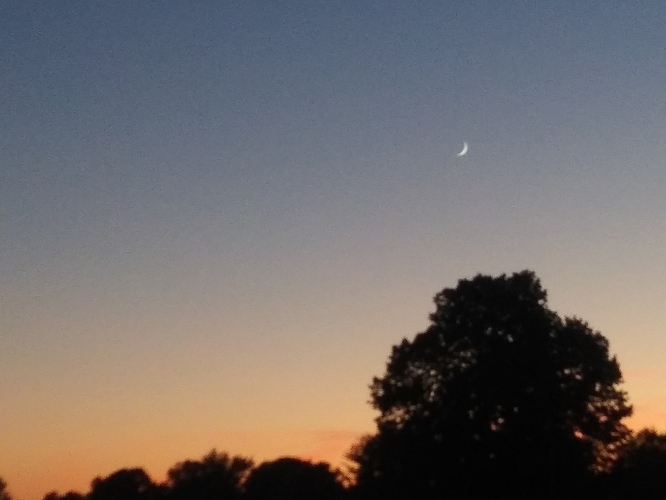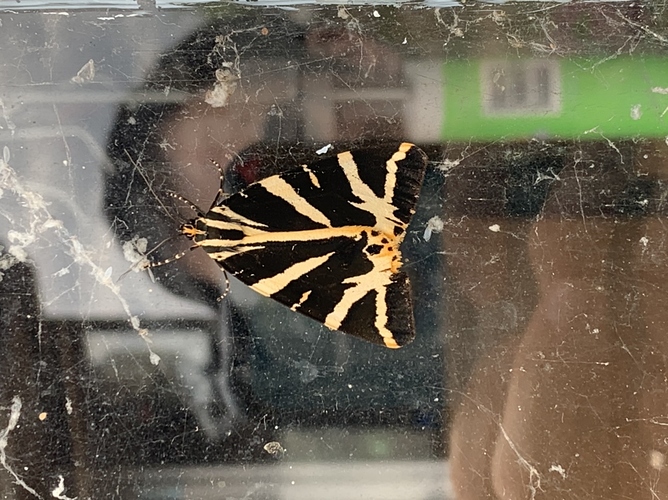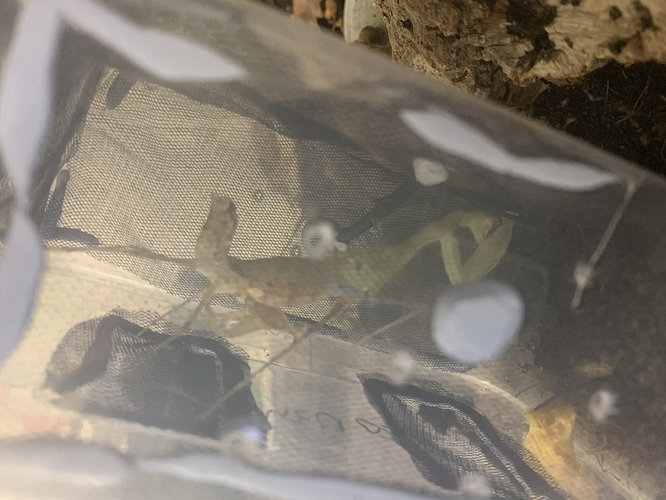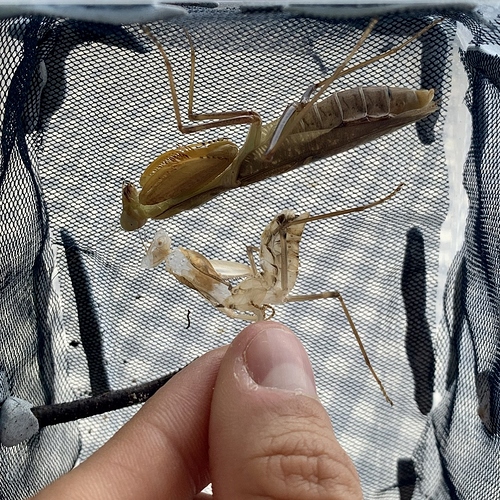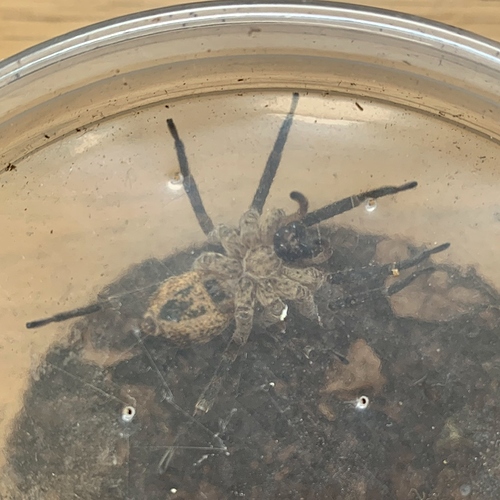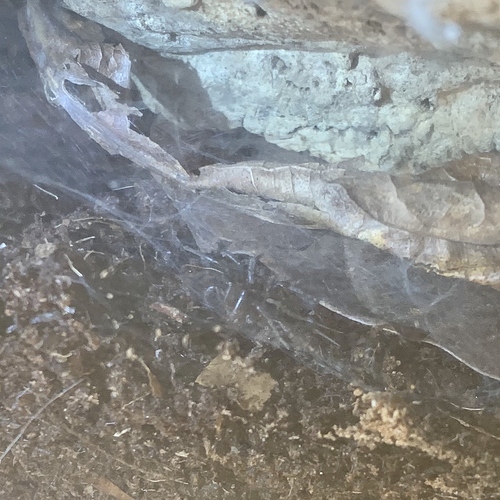Wow.
My sixty-year-old father-in-law at the time of my wife’s folks visit, still a child at heart, went into the surf in Charleston with suit pants and wing-tips when he saw dolphins for the first time, he was so exited. 
 From Nebraska, he had never been to either coast before.
From Nebraska, he had never been to either coast before.
That’s a good looking canine checking out the dophins too. Looks a little like our old dog Fletcher who was a blue merle Australian Shepherd inherited from my wife’s uncle when he died. Got us started on herders and we haven’t looked back.
That’s my granddog. He is a great dog and beautiful Aussie
Saw the comet tonight the pic is with my iPhone 11 it is really neat how you can take a 3 second hand held night pick and the phone patches it into a steady pic. The comet is actually better defined in the pic than to the naked eye. Big Dipper easy to see.
Random photos from today.
Was a good day to go hiking. When I started out it was 106°f and by the end it was 78°f. Was enjoying landscape views today meeting the sky. Saw that poor rabbit and hopefully it will be ok. Also came across a southern house spider “male”. This is actually the first male I saw. I wish I got better images but it’s quite fact. They are sometimes confused for a brown recluse but to me the first thing that set them apart is that the SHS tends to have longer padipalps that are extended. BR tend to curl them in and they are shorter. One of the funniest things I’ve read was the house spiders typical encounter and mating rituals lol.
Here’s my attempt at the comet from last night. The suburbs of Boston are not a great place for astrophotography.
That’s a really good shot, Steve! Was that a time exposure? Or just a high quality or large lens device for capturing night photos? Most of us are fighting light pollution from somewhere - even here in Kansas.
We observed it through a reflector telescope last night - but I don’t have any photos to share from that. Thanks for this photo, though.
Thanks. It was a 3.2 sec, with the camera on a tripod – and I had to play a little in my raw converter to get the sky as dark as I could without losing the comet’s tail. 100 mm lens, f/2.8, on a full-frame Sony. (Definitely not a lens designed for night photography, but it works well for that application: i’s my new, fully manual macro lens. Extremely sharp and near zero chromatic aberrations, and currently my longest lens.)
Superb Dog-day cicada. Not sure what makes it Superb, but that is what Seek called it.
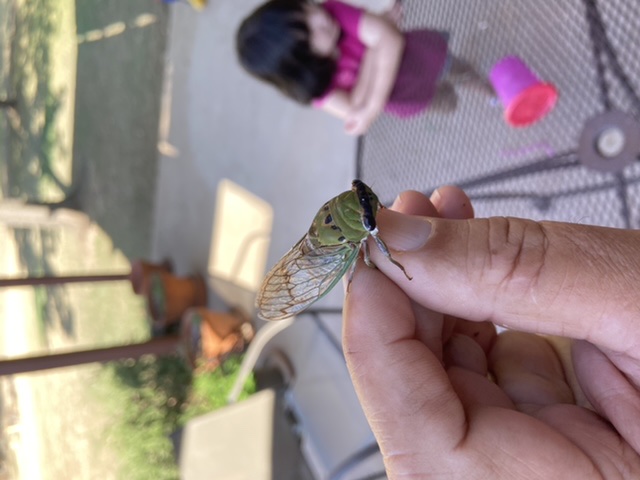
Oh man, I want that phone. I’ve heard so many good things about the camera on that phone. I bought an iphone 10 last year when I left my old 6 on top of the car and saw it explode on the freeway. (I may need to get an idiot mitten kind of cord to connect my phone to my pocket.) I use the camera so much. Some day.
Wow, Phil, that’s incredible for a phone photo!
Yeah it is. I always have to prop my phone up where I can still poke the start and stop button on my iphone7 using the nightcap app. Takes like 30
Seconds of exposure too.
Initially I downloaded it because I wanted to get firefly paths images but it never worked because backlights grow brighter and brighter as well and overtakes it all.
Any guesses what this might be?
Here is a better clue:
And the answer is …
Dracunculus vulgaris, AKA dragon lily , dragon arum , the black arum , the voodoo lily , the snake lily , the stink lily, the last one being spot on. When it blooms it is like opening a utility closet and discovering a dead rat. Its an aroid ranging from the Balkans to Greece. Mine came up but then keeled over this year. I fear root competition with a nearby Quaking Aspen might be the cause. This winter I will dig them up and relocate them to a more favorable location.
Wow.
A busy couple of days in the Maguire’ household!
Yesterday I cleaned out my European Fire Ant (Myrmica rubra) setup and added some dirty and furnishings to their outworld. Here you can see them having them guarding the entrance that leads to their nest site:
These additions function as enrichment for the ants by encouraging their natural foraging and digging behaviours. It’s been great watching them move around bits of leaf, dirt, and wood around as they landscaped the area to suit their needs.
And here is the inside of the brood chamber (usually covered). See if you can spot the queen!:
Another Jersey Tiger on the garage window
My Togo mantis (Sphodromantis sp. unknown) moulted from sub-adult to adult last night. This is the trickiest moult since the size increase is the largest jump - meaning the biggest risk of fatal ‘stucks’ and falls. Also she has to remain still for sometime to pump hemolymph (bug ‘blood’) into her wings to inflate them, all whilst her exoskeleton is still hardening.
Not the clearest shot, but here you can see her in the final stage of moulting. Inflating her wings and getting ready to pull the tip of her abdomen clean of the old skin.
Here she is post-moult with the old skin for comparison:
TRIGGER WARNING ARACHNOPHOBES
I also rehoused my Mediterranean Spiny False Wolf Spider (Zoropsis spinimana). It is an invasive that has been establishing in the London area for the last 10-15 years. I have three at the moment and am in the process of writing up a series of observations which I hope to submit for publishing in the journal Arachnology later this year.  .
.
Not as big as it looks, roughly a 1.5cm body length and a 5cm leg span:
And this is the newest addition to my collection a mygalomorph called Ischnothele guianensis. It is titchy (only a 7.5mm body length, 2.5cm leg span) but fast moving so you’ll have to forgive me that this is the best I can do!:
Evolutionarily speaking, Mygalomorphs like I. guianensis are primitive spiders, having downward pointing rather than cross action chelicerae (jaws) and two pairs of book lungs instead of one. They also lack the internal glands to produce the complexity and range of silk deployed by true spiders (araneomorphs) for wrapping prey or making orb webs, etc.
Even so, Ischnothele is a ‘heavy webber’ creating a funnel retreat leading out on to countless sheets on thin web. Once prey falls on the web it dashed out with lightning speed, bites and then drags off the prey with overwhelming strength. Looking forward to seeing it fill its enclosure with webbing!
Edit: not sure why some of the images have the wrong orientation. Soz 
Great pics!
